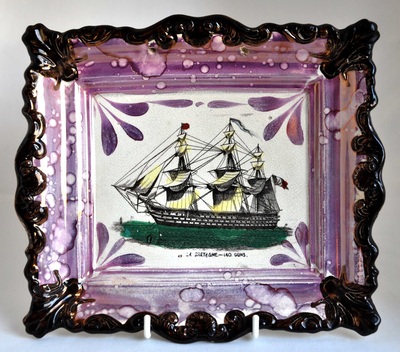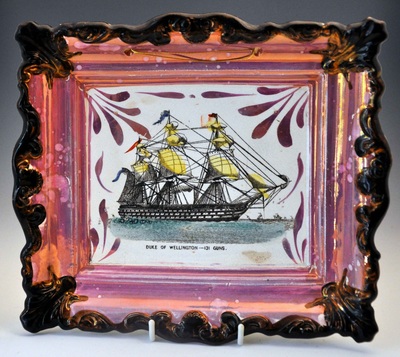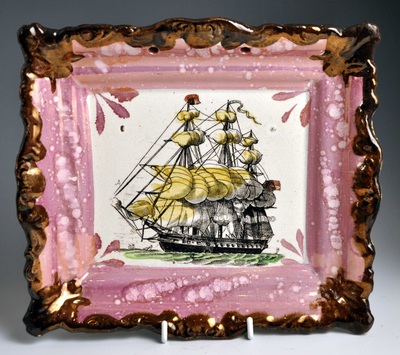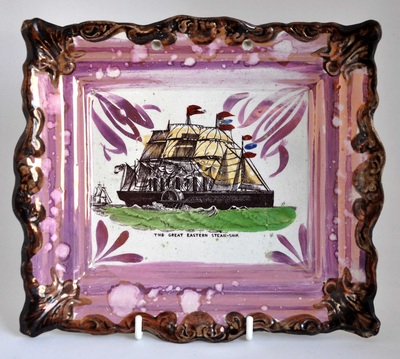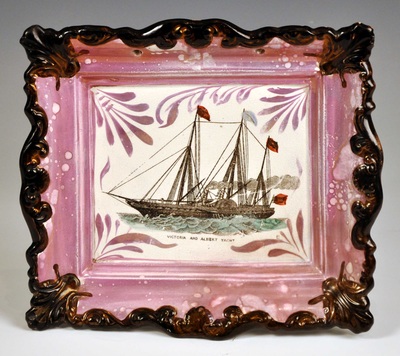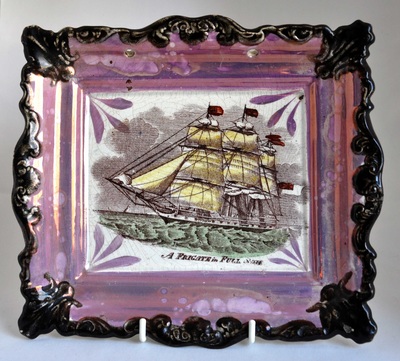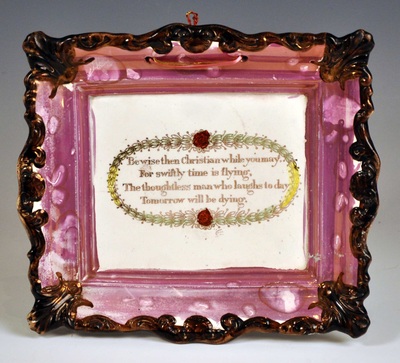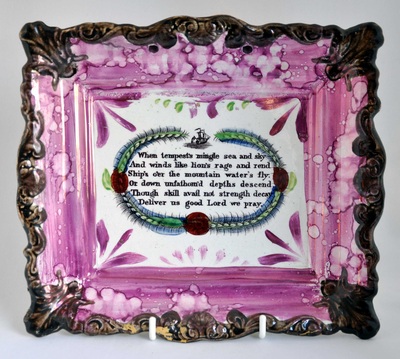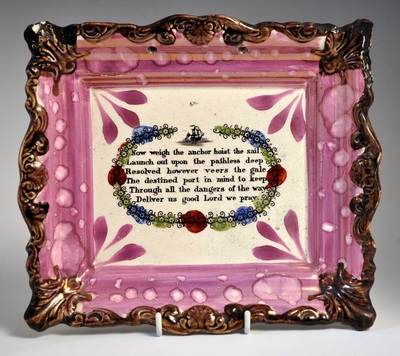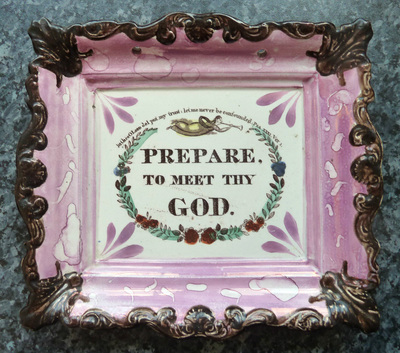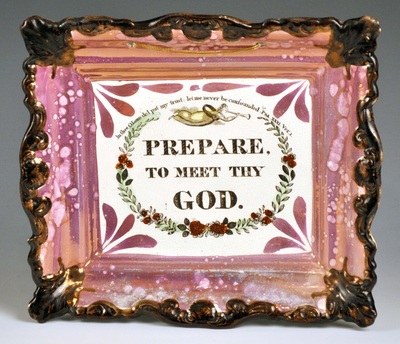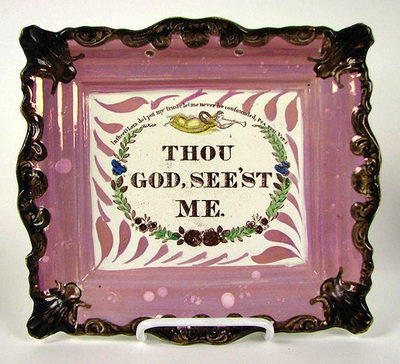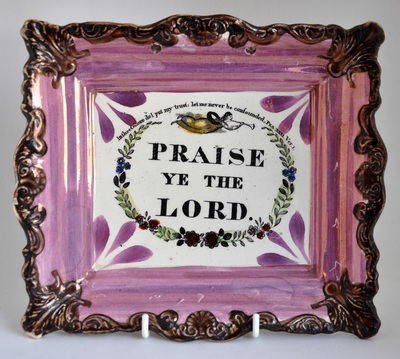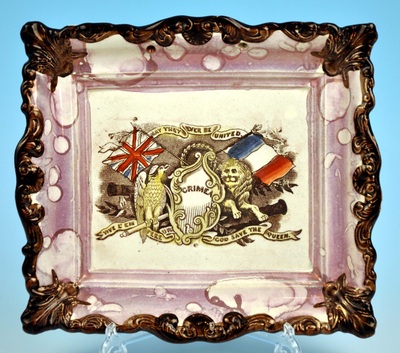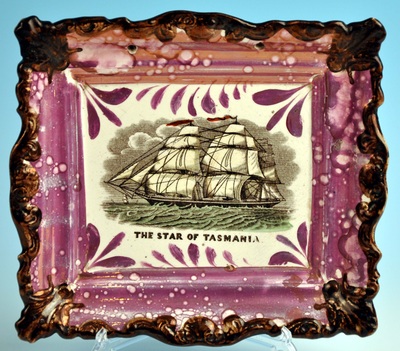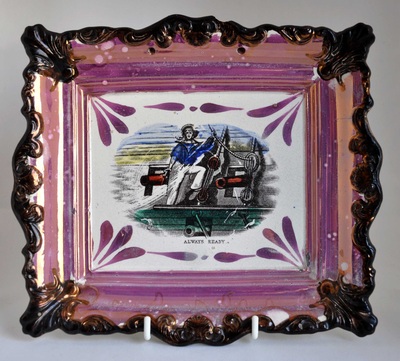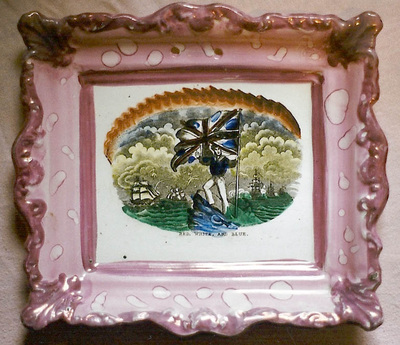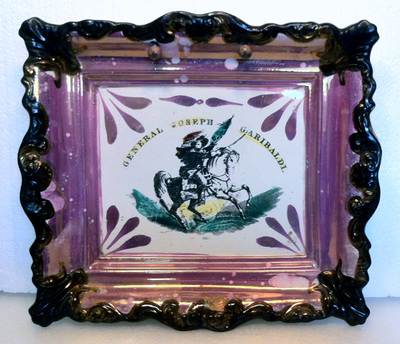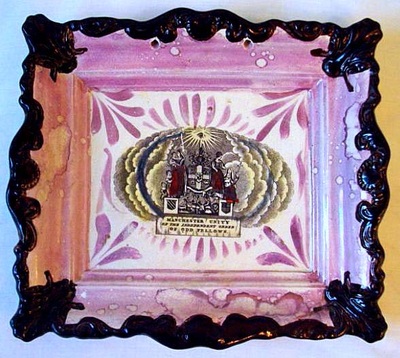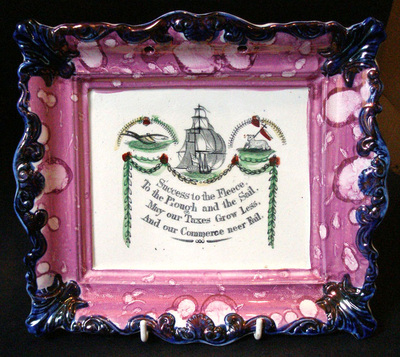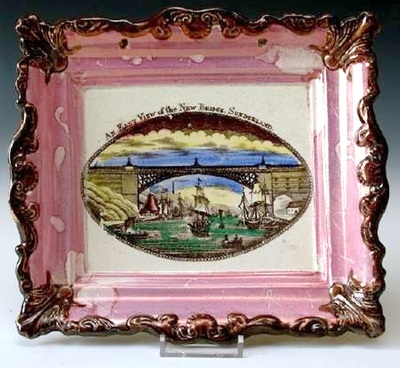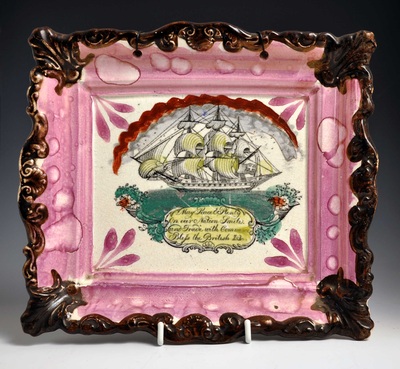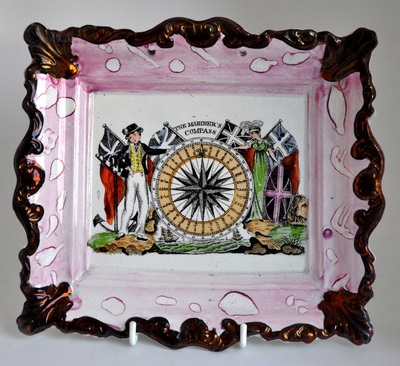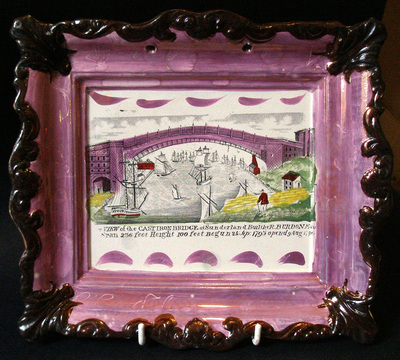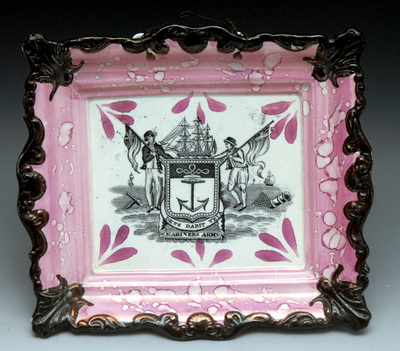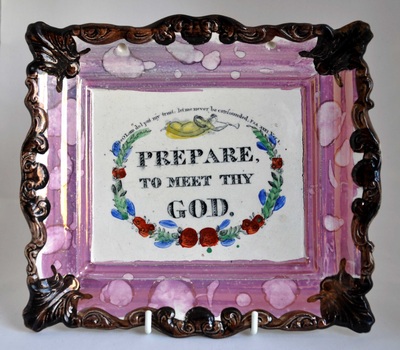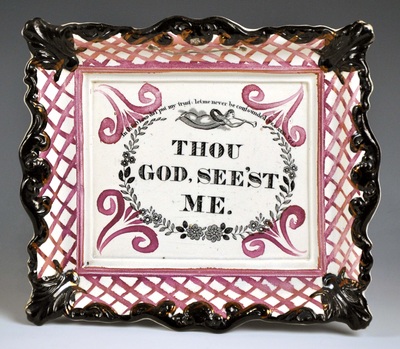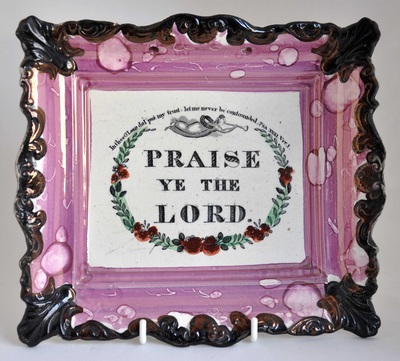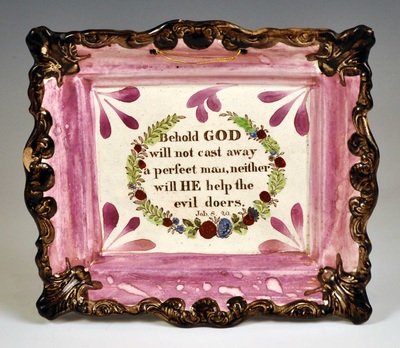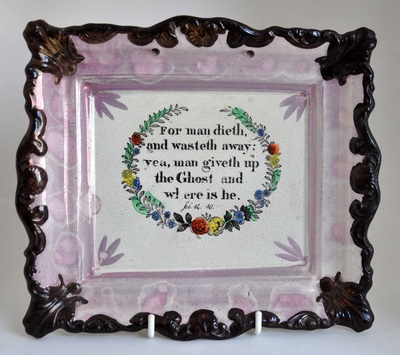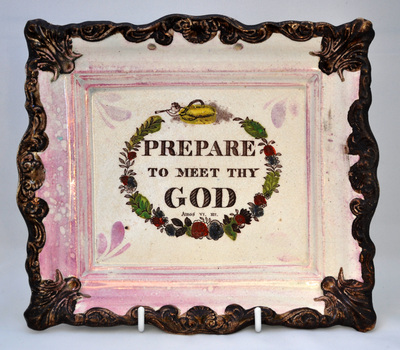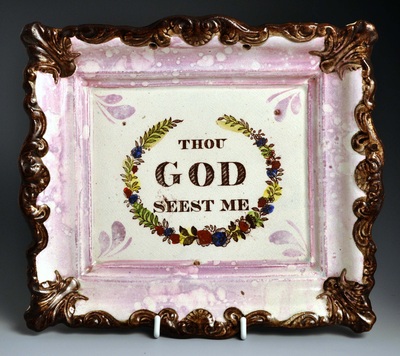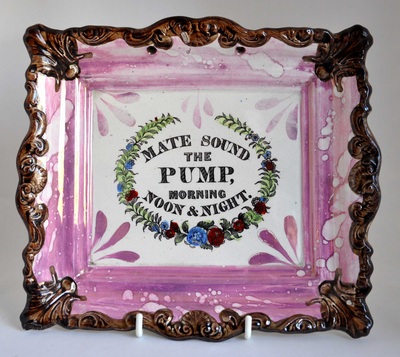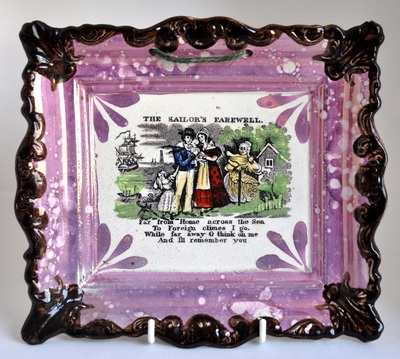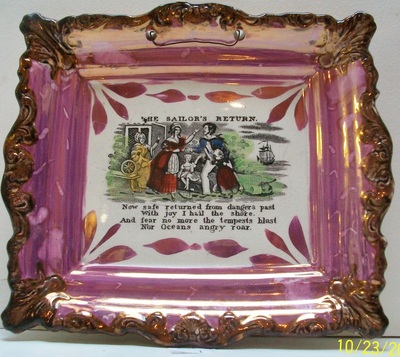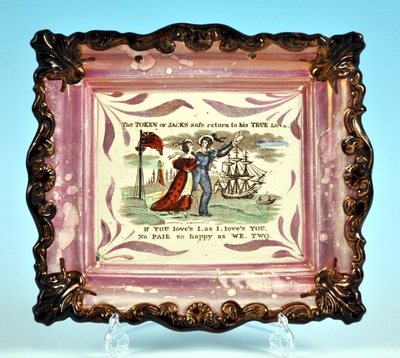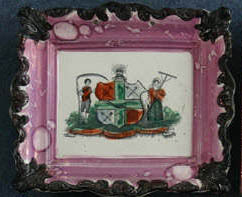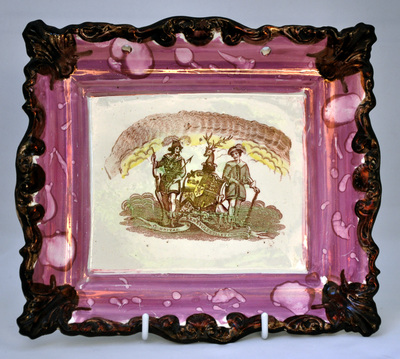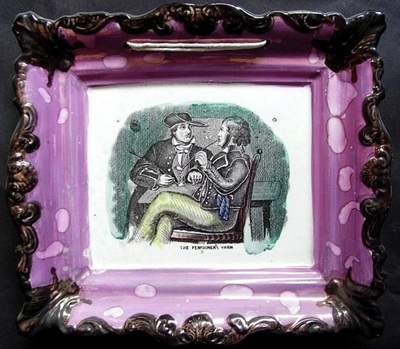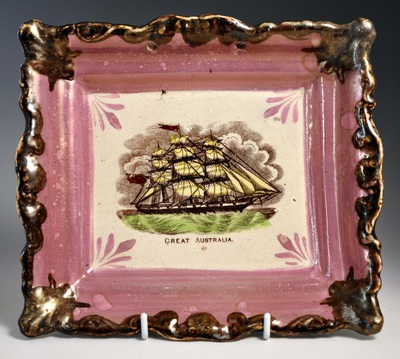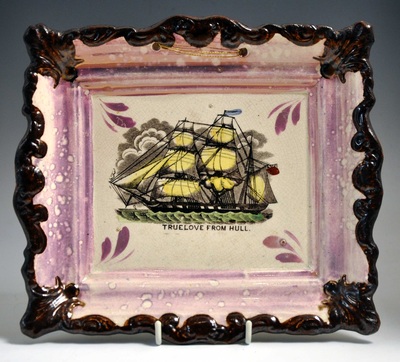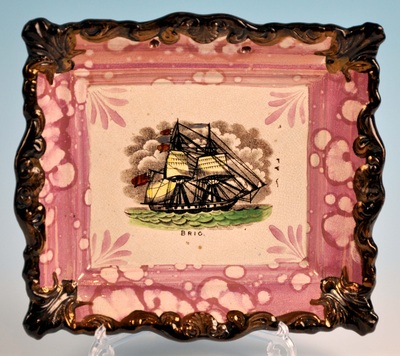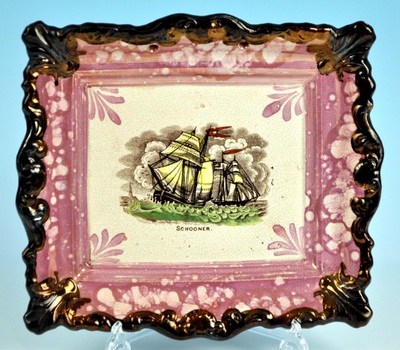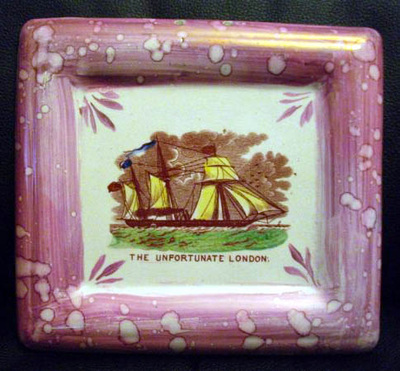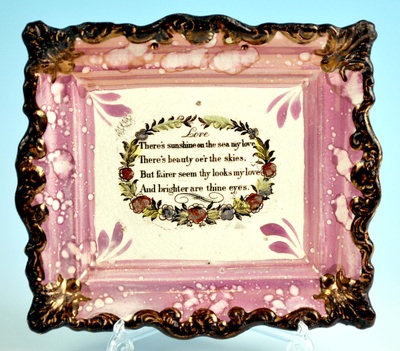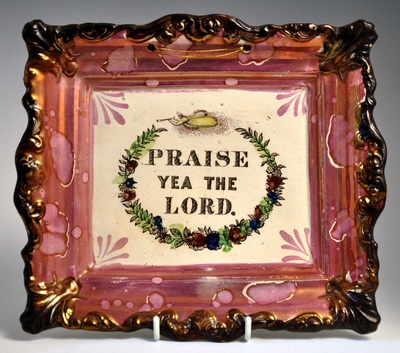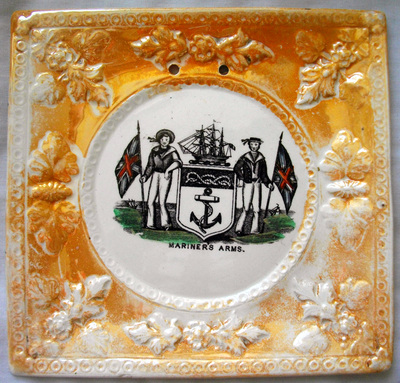|
If you've visited this post before, you'll see I've been refining it over the last few days. There are at least 47 different transfers that appear on brown-bordered plaques. Few collectors will manage to get even a full set of ships, of which there are at least 12 (13 counting 'May Peace and Plenty'). Each of the photos in this post represents a different transfer. So where did the transfer plates come from? Transfers from MooreThe largest group of transfers I can trace back to an 1850s' source come from Moore's (21 of the 47 transfers in this post). I have earlier Moore-impressed plaques with the first two transfers below. The next three also appear on typical Moore plaques from the 1850s. The 'Frigate in full sail' transfer (last plaque below) hasn't yet been recorded on a Moore plaque. However, it does appear on a Moore-marked bowl dated 1859. The first and second transfers below appear on the Moore-impressed bowl dated 1859 (see above), so although they don't appear on Moore plaques, I've included them in this section. The third plaque pairs with the second, so I've included it also. Four different common verse transfers on brown-bordered plaques can be traced back to Moore. Below are two 'Prepare' transfers - one from Sunderland plate 4 and one from plate 5 - and a 'Thou God' and 'Praise Ye' from Sunderland plate 4. (For an explanation of the numbering of the different plates, see the 'Religious' verse pages.) The transfers below have all been recorded on items from Moore's in the 1850s. One is so rare that I don't yet have images of the brown-bordered version (top right). Transfers from ScottIn truth, we can't be certain that any of the transfers that appear on brown-bordered plaques came from Scott. The Scott group 1 transfers never appear on this plaque form. There's as yet no firm evidence that the transfers in Scott group 2 come from Scott, as they don't appear on identifiable Scott wares. The supposition that the transfers came from Scott's is entirely based on working backwards from these brown-bordered plaques, which are widely attributed to that pottery. Although the transfers in this group are few in number, the May Peace and Plenty is the most common of all the brown-bordered ship plaques. There are three verse transfers from this group that make it onto the brown-bordered plaques. The first is from the Sunderland plate 2 'Prepare' transfer plate. The second from the Sunderland plate 3 'Thou God' transfer plate. The third is from the Sunderland plate 3 'Praise' transfer plate. Interestingly, there is evidence to suggest the second and third transfers originated at Newbottle, which had links with both Scott and Moore. The verse transfers below are much more common on brown-bordered plaques than the Moore versions above. The transfer plates in this group all appear to have been retired (probably from over use) before the orange lustre period. Transfers from DixonThese were discussed at length in my previous post, but here they are again. As I've already set out, I believe Moore is the strongest contender to have purchased these transfers. Transfers of unknown sourceThe transfers below haven't as yet been recorded on earlier Scott-attributed or Moore-marked items. I think there's a reasonable chance that the first three, at least, will be found one day on Moore-marked items from the 1850s. It's not surprising that the second group below haven't been recorded on earlier items. The Great Australia transfer is after an engraving in the Illustrated London News from 1860. The Unfortunate London didn't sink until 1866. That transfer is so rare on brown-bordered plaques that I don't have a photo of one (I don't yet have a photo of a brown-bordered Mariners' Arms either, so have included an orange version). My guess is that the plaques below (with very similar decoration) have transfers which debuted on the brown-bordered plaques after 1865. They all appear relatively commonly on orange-lustre jugs and bowls from the 1870s. Their later date explains why they appear so rarely on brown-bordered plaques: they were produced over a much shorter period, i.e. just before orange lustre superseded the plaques with brown borders. So what's to be concluded from all this? There was perhaps a little more innovation regarding transfers during this period than I had given credit for. But still the majority of transfers were recycled (33 vs 14), and some of the first group in the last section were copies of other potteries' transfers.
By far the largest contributor of recycled plates was Moore: triple the number that came from Scott (21 vs 7, or 26 vs 7 if you include the Dixon transfers). And there's some doubt whether the 7 transfers I've attributed to Scott did indeed come from that pottery. Why not Newbottle? There is homogeneity of decoration across all the groups above (I have livened things up by including less typically decorated items). You'll see where I'm going with this. There's little reason to suspect that these plaques were decorated at multiple locations. And if they were decorated at one location, surely Moore is our front runner.
1 Comment
|
AuthorStephen Smith lives in London, and is always happy to hear from other collectors. If you have an interesting collection of plaques, and are based in the UK, he will photograph them for you. Free advice given regarding selling and dispersal of a collection, or to those wishing to start one. Just get in touch... Archives
February 2022
AcknowledgementsThis website is indebted to collectors, dealers and enthusiasts who have shared their knowledge or photos. In particular: Ian Holmes, Stephen Duckworth, Dick Henrywood, Norman Lowe, Keith Lovell, Donald H Ryan, Harold Crowder, Jack and Joyce Cockerill, Myrna Schkolne, Elinor Penna, Ian Sharp, Shauna Gregg at the Sunderland Museum, Keith Bell, Martyn Edgell, and Liz Denton.
|
